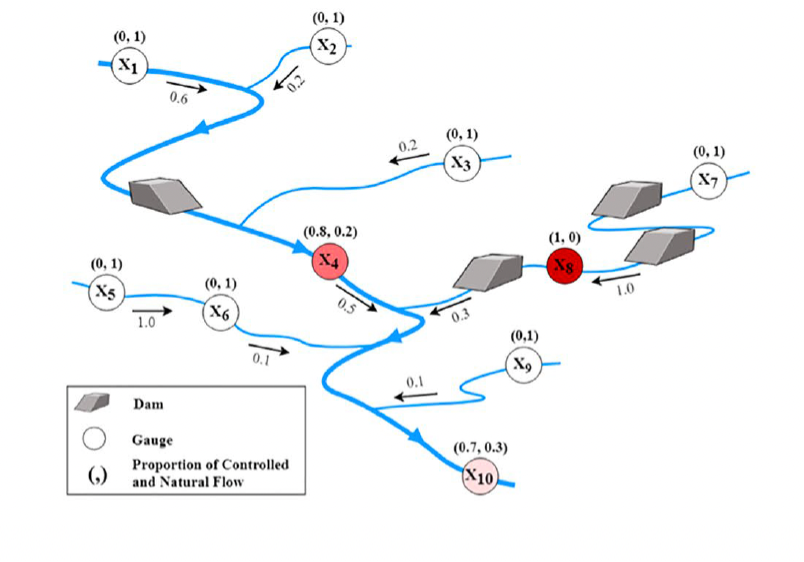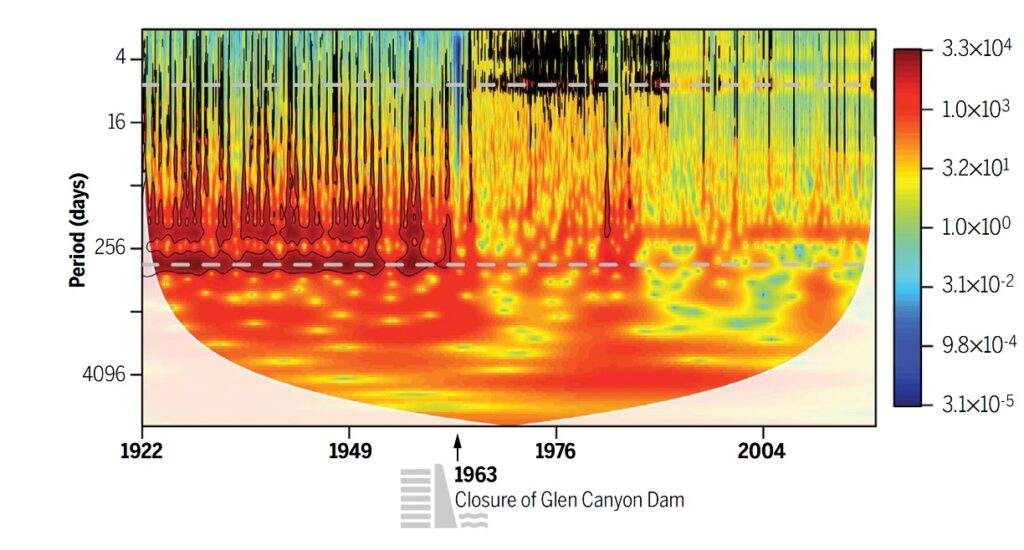Research in ecology and environmental sciences often involves measuring responses over time–whether data is generated by field observations, lab experiments, or computer simulations. Yet, analyzing time-series data is challenging because conventional statistical methods assume that observations are independent of each other. Time-series modeling tools leverage such dependencies, and provide strong inference where other methods would fail. They also allow us to ask sophisticated questions: Can we identify the trend and periodic patterns in a time series–and thus disentangle signals from unpredictable ‘noise’? Based on past observations can we say anything about the future–such as the probability of temperature surpassing a critical threshold, or of a species going functionally extinct?


In the Ruhi Lab, we often leverage time-series data from sensors and biomonitoring programs to test hypotheses about the underlying processes generating observed patterns. We use techniques in the frequency and time-frequency domain (e.g., Discrete Fast Fourier Transform, wavelets) to understand what are the dominant periodicities in the environment – and whether they change over time. Examples of applications include quantifying impacts of dams on flow anomalies and the timescales of flow variability, linking hydrologic extreme events to native fish persistence, and predicting how warm-water plumes propagate across river networks.
Related grants
2021-26 Sole PI, NSF CAREER: Drought and metacommunity stability in riverine networks (DEB-2047324).
2019-20 Sole PI, Subaward from the National Socio-Environmental Synthesis Center, University of Maryland. Advancing quantitative methods to understand causal pathways and feedbacks within complex socio-hydrological systems.
Software
Shah, S., Ruhi. A., Future H2O (2019). R Package ‘discharge’. Fourier Analysis of Discharge Data. v.1.0.0, CRAN. https://CRAN.R-project.org/package=discharge.
Selected publications
Tu, T., Comte, L. & A. Ruhi (2023). The color of environmental noise in river networks. Nature Communications, 14:1728.
Leathers, K., Herbst, D., Safeeq, M. & A. Ruhi (2023). Dynamic, downstream-propagating thermal vulnerability in a mountain stream network: implications for biodiversity in the face of climate change. Limnology and Oceanography, 68(S1): 101-114.
Chalise, D.R., Sankarasubramanian, A., Olden, J.D. & A. Ruhi (2023). Spectral signatures of flow regime alteration by dams across the United States. Earth’s Future, 11(2):e2022EF003078.
Comte, L., Grantham, T. & A. Ruhi (2021). Human stabilization of river flows is linked with fish invasions across the United States. Global Ecology and Biogeography, 30(3):725–737.
Ruhi, A., Dong, X., Holt, C., Batzer, D.P. & J.L. Sabo (2018). Detrimental effects of a novel flow regime on the functional trajectory of an aquatic invertebrate metacommunity. Global Change Biology, 24(8):3749-3765.
Sabo, J.L., Ruhi, A., Elliot, V., Arias, M., Holtgrieve, G. & N. So (2017). Designing river flows to improve food security futures in the Lower Mekong Basin. Science, 358(6368):eaao1053.
Ruhi, A., Olden, J. & J.L. Sabo (2016). Declining streamflow induces collapse and replacement of native fish in the American Southwest. Frontiers in Ecology and the Environment, 14(9):1-8.
Ruhi, A., Holmes, E., Rinne, J. & J.L. Sabo (2015). Anomalous droughts, not invasion, decrease persistence of native fishes in a desert river. Global Change Biology, 21(4):1482-1496.
